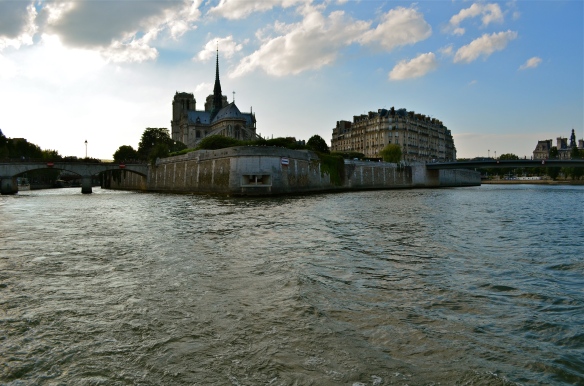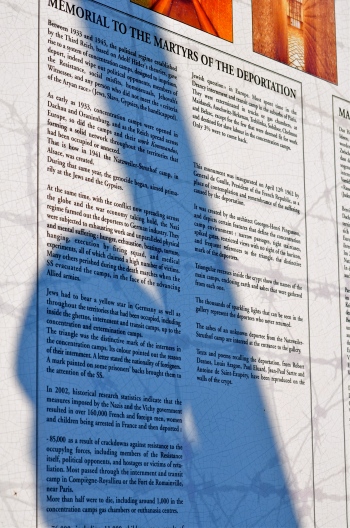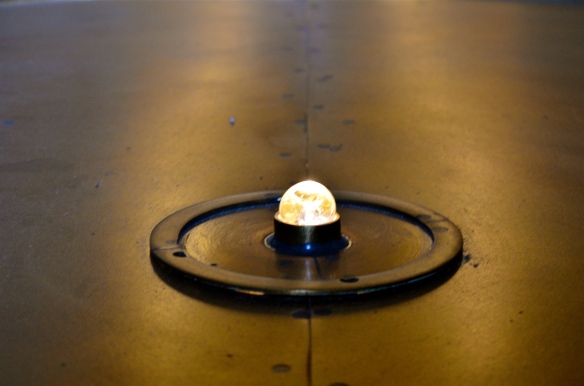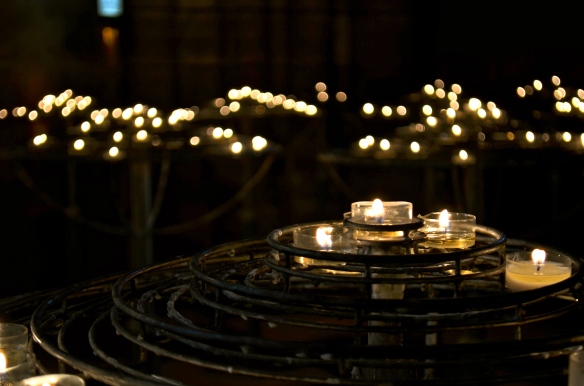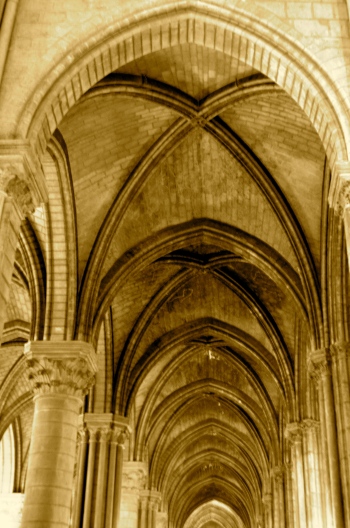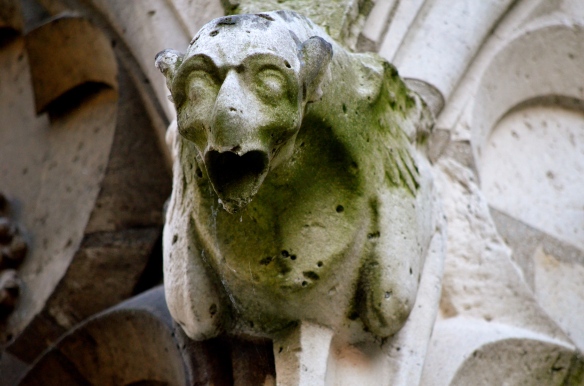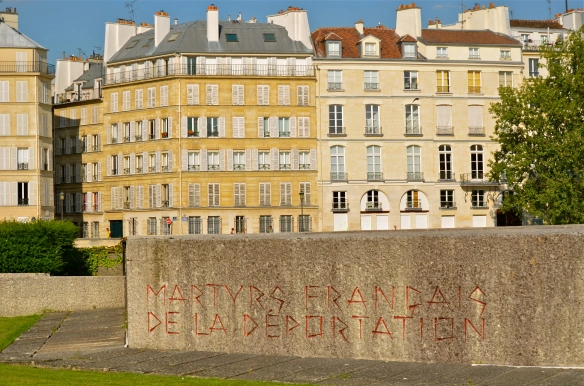
A driver in France told me that people are quick to blame other nations, but the French need to remember that the Vichy government and the French put up little resistance to the deportation of its citizens. While this is debatable, the memorial is uncontrovertibly moving and thought-provoking.
The Memorial des Martyrs de la Deportation is a memorial to the 200,000 people (deported from Vichy France to Nazi concentration camps between 1940-45, during World War II. 85,000 were political activists, resistance fighters, homosexuals and gypsies. Only 2,500 of those deported survived.
Behind Notre Dame on the Isle de la Cite on the site of a former morgue, it is a quiet gem of a memorial. It was designed to represent features of the concentration camps with narrow passages, tight stairways, spiked gates and restricted views of the horizon. The installation is a long narrow corridor lined with small stones of quartz crystal. Each stone represents one of the individuals deported during World War II. It was designed by French modernist architect, writer and teacher, Georges-Henri Pingusson. It was unveiled by President Charles de Gaulle in 1962.

